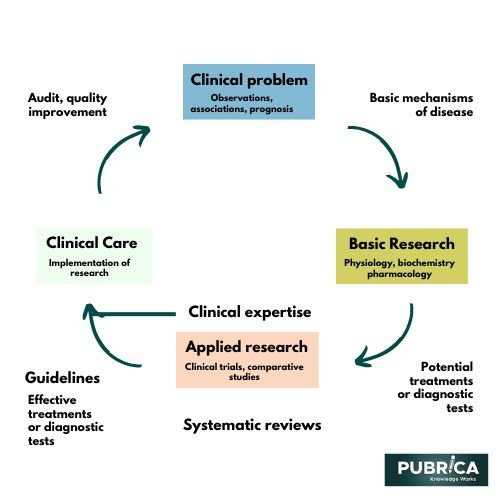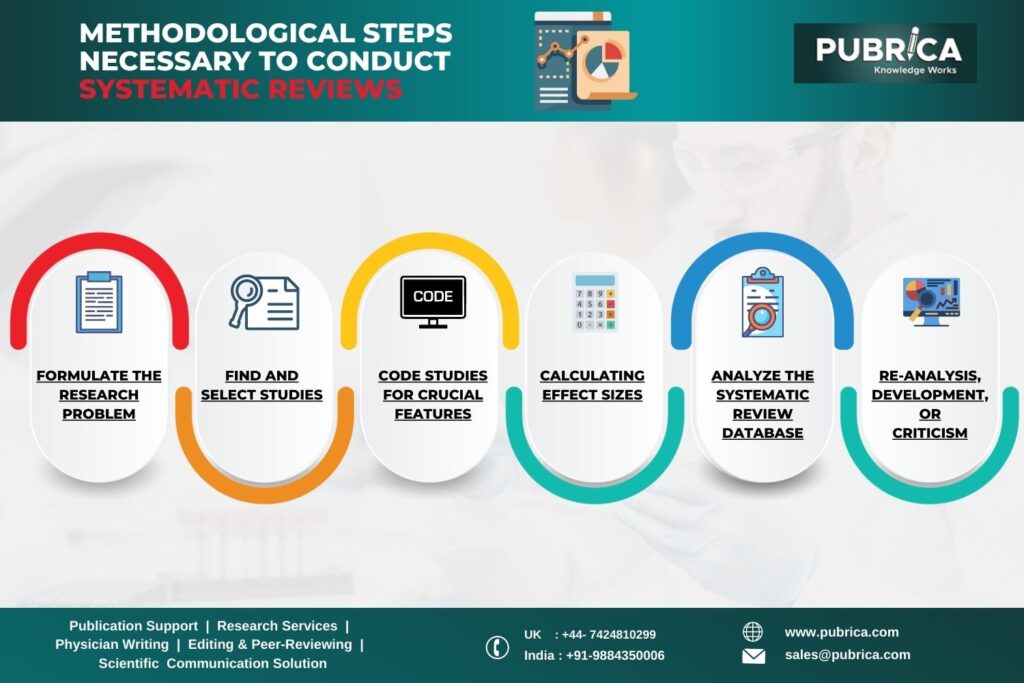
The Clinical Case Report: A Review of the Pain Points
September 20, 2022
Pain points in Writing Original Research Articles
October 11, 2022In brief
This editorial concept first gives a brief overview of the history of evidence synthesis, then explains the significance of reporting standards, lists the sequential steps involved in SRs and meta-analysis, and lists additional methodological concerns that researchers should take into consideration when conducting and presenting the results of their systematic reviews (SRs). When teams of reviewers with the necessary competence apply the most significant scientific rigour to every step of the SR process, successful SRs are the outcome. As a result, SRs without foresight are unlikely to succeed. This blog’s goal was to critically analyze the 2019 paper by Johnson, B. T., & Hennessy, E. A. from the University of Connecticut’s Department of Psychological Sciences, titled “Systematic reviews and meta-analysis in the medical sciences: Best practice approaches for research syntheses.” The article attempted to ascertain the types, restrictions, and instruments of such standards and medical devices in graceful of the SR process’s presumptions, including meta-analysis, including the other SR processes.
Introduction to medical research synthesis
Systematic reviews (SRs), which compile data from several research on a topic, are becoming a more vital type of scientific communication: Since 2010, the number of reports has increased by nearly 200 %. The Preferred Reporting Items for Systematic Reviews and Meta-Analysis services reporting standards and guidelines have just been approved by Social Science & Medicine for writers to utilize when creating review papers for publication. To enable the highest calibre research synthesis to be published, to allow readers to judge if a specific SR “embodies mega illumination” or “mega error,” to promote improved scientific understanding and significant changes in practice. Although the methodologies are taken in total from all of science, the examples are taken from literature on health.
- Meta-analysis is the ‘original big data.’
In essence, SRs combine the findings of two or more separate studies that were conducted on the same topic. SRs might not have a quantitative component to highlight the papers’ conclusions under review. The phrase “meta-analysis” is frequently employed in customary practice to imply that the writing of A Meta-analysis evidence has already been thoroughly obtained and analyzed. Writing Meta-analysis provide a different type that combines qualitative data acquired from several research on the same issue. Meta-reviews, in turn, are reviews about reviews. All SRs are a kind of evidence or research syntheses, whether they be SRs, meta-analysis, met synthesizes, or meta-reviews.
- Assumptions involved in systematic reviews
The history that just ended omitted a concrete explanation of how a lack of rigour may jeopardize SRs. We discuss the fundamentals of systematic reviewing, divided into seven primary processes, which Fig. 1 succinctly summarizes to put these presumptions into context. The assumptions used in systematic reviews are organized per the SR process phase in this section. SR teams frequently improve their approaches as the process goes on, which requires going back and repeating previous parts of the process until the SR is finished with enough quality. This is the first sign that the methods are highly synergistic. The advice we offer in this article’s following paragraphs is summarized in Table 1.
Fig:01 The meta-analysis process is depicted in seven steps that build on each other and sometimes must be repeated as feedback learned during the process emerges.

Table 1 Methodological steps necessary to conduct systematic reviews (SRs), along with best-practice recommendations (the text expands on these points)

| Description | Do | Don’t |
| 1. Formulate the research problem | Use meta-reviews of prior SRs to identify the most exciting questions
|
|
| 2. Find and select studies | From an early point, seek librarian advice to improve searches
|
|
| 3. Code studies for crucial features |
|
|
| 4. Calculating effect sizes |
|
|
| 5. Analyze the systematic review database |
|
|
| 6. Re-analysis, development, or criticism |
|
- Formulating the research problem
The SR team formulates the research challenge in Step 1, which depends on the members’ comprehension of the literature from both a substantive and techniques viewpoint (including statistical assumptions). Importantly, the SR will not be worthwhile to complete if the team has this clear notion. From a practical aspect, it is important to note that Step 1 is essential: The more resources required to review within a reasonable timeline depends on how extensive the research problem is. Therefore, a poorly constructed SR might result in losing essential resources.
- Finding and selecting studies
Step 2 of the SR process involves comprehensive literature searches to identify as much relevant research as possible. As previously said, a well-developed research statement will speed up the finding of studies that meet the inclusion criteria and are eligible for evaluation. There are several exceptions to this rule. Of course, writing a Meta-Analysis manuscript: Since studies may not include mental health features in their titles and abstracts, it was essential to acquire many more full-text reports for analysis in HIV preventive SR.
- Coding studies for substantive and methodological features
The most intriguing parts of the investigations, which the SR team anticipates would attenuate impacts, are captured through coding methods resulting from a well-formulated research challenge for the Clinical Meta-Analysis Experts. For instance, SRs of treatments frequently look at the behaviour modification strategies used to enhance participants’ health; another frequent factor is the treatment dose.
- Calculating effect sizes
SRs pool the findings, either qualitatively or quantitatively. Effect sizes may look at connections between variables, mean levels of phenomena, or both in a meta-analysis, which pools findings from several studies. Authors should also include individual effect estimates for each research or the available quantitative data from the reports in an SR without meta-analysis that focuses on outcomes rather than just qualitative explanations of results.
- Analyzing the Systematic review database
Non-independence across studies in a review is another issue that may need to be addressed at various stages in a traditional meta-analysis. The first instance occurs when effect estimates are determined because, if non-independence is neglected, improper study weighting may follow.
- Re-analysis, development, or criticism
Some literature evolves quickly, superseding existing SRs and increasing the value of updated SRs. If the original SR’s methodologies were of good quality, the prior SR’s database, if accessible, may be reanalyzed to assess these hypotheses. Alternatively, an SR team may hypothesize that dimensions not taken into account in a published SR could assist explain observed heterogeneity.
Conclusion
In this article, we tried to offer best practice guidelines for research synthesis. Table 1 highlights a list of quick “does and don’ts.” While it is significant to note that these quality inventories have flaws and may not always reflect the state of science, we have highlighted several tools to aid researchers in research synthesis. When an SR uses the most reliable techniques to focus on a significant body of literature, the findings may create a clear-cut statement that directs future study and policy choices for years to come.
About Pubrica
The team of researchers and writers at Pubrica creates scientific and medical research articles that may serve as invaluable resources for practitioners and authors. Using the reader to inform them of the gaps in the chosen study subject, Pubrica medical writers assist you in writing and editing the introduction. Our professionals know the order in which the broad subject, the issue, and the background are followed by the topic where the hypothesis is stated.
References
- Johnson, Blair T., and Emily A. Hennessy. “Systematic reviews and meta-analysis in the health sciences: Best practice methods for research syntheses.” Social Science & Medicine 233 (2019): 237-251.
- Siddaway, Andy P., Alex M. Wood, and Larry V. Hedges. “How to do a systematic review: a best practice guide for conducting and reporting narrative reviews, meta-analysis, and meta-syntheses.” Annual review of psychology 70 (2019): 747-770.
- Brugha, Traolach S., et al. “Methodology and reporting of systematic reviews and meta-analysis of observational studies in psychiatric epidemiology: systematic review.” The British Journal of Psychiatry 200.6 (2012): 446-453.
